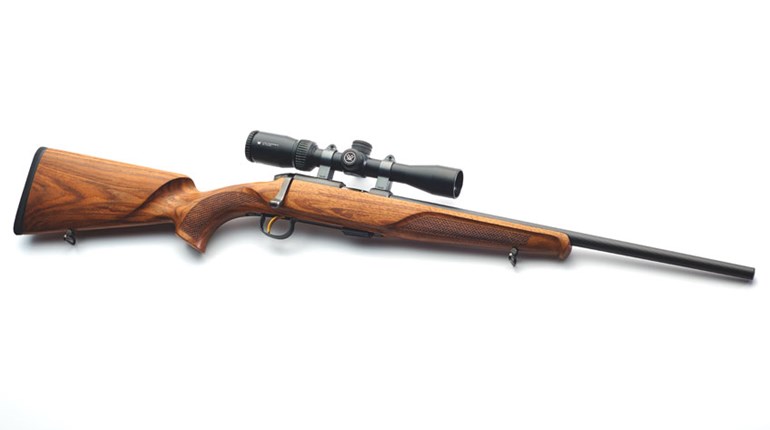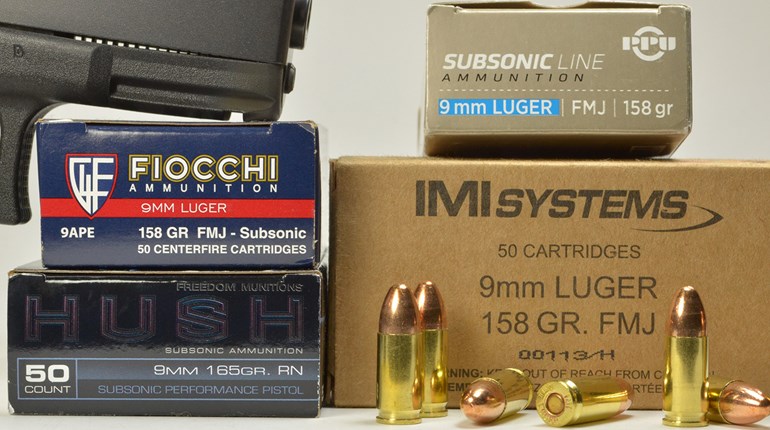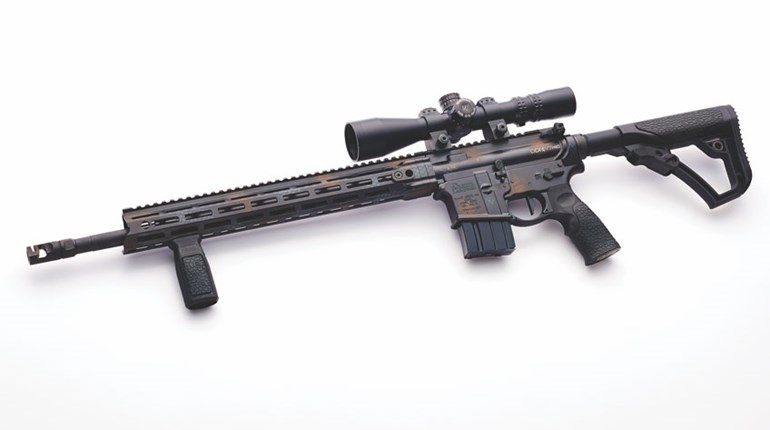
If our title has you suspecting “Carry Life” is diving into a little (horrors!) math in this installment, we have no solace to offer. Math it is, though of the sort that wouldn’t tax an apt middle schooler. Really, you’ll be fine.
We also think it’s well worth your trouble. Misunderstandings about the implications of bullet weights and velocities in the principal defensive calibers are common, and a frequent if somewhat hidden source of dissatisfaction with carry firearms. It’s fair to say that this knowledge won’t solve any issues directly, but it will help you be a better informed user. You’ll also be able to attach some quantifiable characteristics to the ammunition you prefer, and purchase accordingly.
Sorting this out requires that we consider two treatments of ballistic energy as it relates to the recoil/shot recovery cycle.There’s another benefit, too. “Preferences” often manifest as overall comfort, for lack of a better term, in the recoil/recovery characteristics of your carry gun. A natural sequitur is that you are more likely to train and practice with a firearm that isn’t beating you up. More practice is always a good thing.
Sorting this out requires that we consider two treatments of ballistic energy as it relates to the recoil/shot recovery cycle. The first is the most common, literal kind: E = mv². In shooting terms, this is the energy (“E”) which gets applied to the target in foot-pounds as a function of the mass of the projectile (“m,” measured in grains, or 1/7000th of a pound), multiplied by the square of the velocity (“v,” measured in feet per second). If you run the calculation on a known projectile/velocity combination, it will be plain the result is scaled to unhelpful size—eight or nine digits. Here, there’s a very convenient short-cut for ballistic purposes—divide the result by 450,435 to get back to old fashioned foot-pounds.
Via Newton’s Third Law, this same amount of energy gets applied to you as recoil, albeit spread out over time by spring action (in semi-autos), and the mass of you and your firearm.
It’s interesting to note that comparatively large changes in “E” energy are necessary to produce differences in felt recoil. One of the best examples is also a classic one, and illustrates a comparative fallacy as well—the idea that .45 ACP has “more” recoil than 9 mm Luger. While there are competing definitions for original or standard loads in both calibers, one set of calculations puts 9 mm nearly 3 percent above .45 ACP (115 grain @1200 ft/sec vs. 200 grain @900 ft/sec), and another (115 grain @1150 ft/sec vs. 230 grain @810 ft/sec) still gives a 1 percent edge to 9 mm. Yet almost anyone familiar with both will report that .45 ACP is reliably heavier-recoiling, despite this surprisingly close numeric equality.
Less-experienced shooters may find such rapid cycling a barrier to learning good pistol-craft …There’s another way to look at this energy, and—as we’ll see—it relates somewhat better to the sensation we experience as recoil. It has the advantage of being a simpler calculation as well: P = mv. “M” and “v” mean what they did before, and the “P” denotes momentum. Actual calculation results in another odd number in terms of scale, and a difficult unit to visualize—mass distance over time. Happily, we don’t much care about the units, as the scale tells us what we (mostly) want to know: A lower number corresponds to lighter felt recoil, a higher number to heavier recoil. For most defensive cartridges, the value will be between 100,000 and 200,000. (Competitive shooters may recognize this as “power factor.”)
Using the “P” measure, our previous comparisons make more sense in terms of how the calibers feel. .45 ACP does indeed have more oomph, by nearly a quarter in the first case, and one-third in the second. But what it means when you’re staring at box labels or online advertisements may not be quite so cut-and-dried, and this is where individual shooter tastes and aptitudes should re-enter the selection process.
If you’re selecting ammunition within a caliber, it can be generally said that heavier bullets will have softer recoil than lighter bullets. This is mainly because they are carrying less “E”-type energy downrange. (A 147-grain 9 mm bullet that has the identical recoil impulse as a 115-grain projectile will have 22 percent less energy.) More than anything, this is a function of the allowable pressure for a given cartridge by industry-agreed specifications. A heavier bullet quite often cannot be “loaded” to the same operating pressure as a light bullet without damaging (or destroying entirely) a normal firearm for the correct caliber.
Using bullet mass to make comparisons across calibers can be useful too. Smaller caliber firearms with higher-velocity projectiles do almost everything faster in mechanical terms, though the differences are measured in a very few hundredths of seconds. While it may seem incredible, there are more shooters than you might expect who can take advantage of these differences to run at fairly astonishing speeds. The flip side of this is predictable: Less-experienced shooters may find such rapid cycling a barrier to learning good pistol-craft; more apparent gun movement, difficulty reacquiring sight picture, grip-shift, etc. are common complaints. “Snappy” is a good descriptor.
Larger caliber handguns are less inclined to this abruptness. Staying within the power limits decreed by action design and materials strength, they accelerate heavy projectiles to lower muzzle velocities, and tend to “roll” through recoil perceptibly slower. Small as the margins are—usually between .02 and .04 seconds—it’s surprising how often this is juuuuust enough additional time for the brain, eyes and hands to get in better sync with the firearm.
A real-world example—somewhat extreme, we concede—may help make the trade-off we’re angling at clear. We reported to you from USPSA L-10 and Open Nationals in 2015, where we were finishing our test of the SIG P320 in .45 ACP. Ammunition for the affair was of our own confection: A 255-grain, copper-clad, truncated cone running at ~685 feet/second. Our “P” was well over the required 165,000 (174,000-plus) in order to score on the major power factor scale. The remainder of our Squad 7 shooters were all shooting “Open” Division pistols with 124- or 125-grain 9 mm bullets, in their turn fast enough to stay on the “major” scale as well (over 1,300 ft/sec, with “P” power in the low 170,000s).
If you’re shooting the same weight bullets out of habit, give something lighter or heavier a try.These lightweight, high-velocity projectiles were producing nearly 500 ft-lbs of energy and laser beam-like velocities, but snappy (despite compensation) is still the name of their game. By going the other way—our velocities were less than half those of the .355/9 mm shooters—we had more drop to account for on long shots, but the energy we had to dissipate was only about 55 percent of theirs. Needless to say, our SIG ran like the proverbial popgun—soft recoiling in the extreme, and directly contrary to the idea that large calibers and heavy bullets are by definition punishing. (We took good-natured heat for lobbing artillery rounds downrange. With early morning or late day sun reflecting off the base of every bullet, each was easily “watchable” from barrel to target at sub-700 ft/sec velocities. Our reply? “As long as it’s accurate artillery, who cares?”)
Two cautions here. First, you’ve probably noticed that not all examples of a given bullet weight feel the same in your pistol either. Sometimes the variations are really obvious—big fireballs and loud report from brand “X,” and pussycat soft/quiet from brand “Y.” You may also notice that batches from the same manufacturer bearing the same labels are not the same. Be assured this isn’t you. There are several potential causes, but the most likely is the use of different burn rate powders in cartridges. These are beyond our scope for the moment, but they’re another hint of the benefits of handloading—more varied bullets choices (we use 9 mm projectiles ranging from 90 to 165 grains, for instance), and powders of any pistol-applicable burn rates.
The second applies only to revolver fans: Because your firearm does not store energy in springs and moving mass (the slide of a semi-auto) you get, in an important sense, a truer sensation of comparative recoil energies. “More” or “less” comes to you essentially unrefined. There’s unhappily a downside—only powder charge, burn rate and bullet mass are available to tune recoil, and unless you handload, the latter is the only one you can easily choose.
There may not be the usual sort of takeaway from our review of the energy vs. momentum math. Or if there is, perhaps it’s a “gimme”: If you’re shooting the same weight bullets out of habit, give something lighter or heavier a try. A present or standard choice may be performing well, but you may find an alternative that performs better still, mainly because it allows you to execute basics faster—follow-through and reacquisition of the sights are the most likely candidates. Running the different types over the same courses of fire against your shot timer is the best way to get some quantification of your own.
Now experiment a little, and Carry On.
Frank Winn has been studying arms and their relationship to tyranny, meaningful liberty and personal security all his adult life. He has been a firearms safety/shooting instructor for more than 20 years, and earned state, regional and national titles in several competitive disciplines.

































